Propagandists have been working overtime to dominate your cognitive world.

The covid era has bought to light an information war. One that was always there but operating at a more subtle level. Now, those in charge barely hide their attempts at seeking what communications and propaganda expert Greg Simons refers to as “total information domain dominance”.
Have you ever stopped to wonder how almost overnight, the populations of nearly 200 countries accepted the removal of basic civil and political rights and the imposition of extended lockdowns, masks and social distancing? And on the basis of really very flimsy evidence of a health crisis purported to be of globally catastrophic proportions?
Just as one example, the World Health Organisation declared a global Public Health Emergency on 30 January 2020, when there were just 82 confirmed cases of covid-19 outside of China.
Have you wondered how the leader of a ‘democratic’ country can declare themselves the “single source of truth”, reminiscent of the totalitarian regimes of the 20th century, and not be challenged on it by the fourth estate?
And how nearly two years later, after the destruction of hundreds of thousands of ‘mom and pop’ businesses globally, the loss of large parts of two school-years for children and university students, the long-term separation of family due to border closures, an exponentially increased mental health burden, massive indebtedness, the destruction of medical privacy, and the creation of an underclass of people in previously free and democratic countries, the public is still putting up with it?
It comes down in large part to propaganda and information management, says the associate professor and researcher at Uppsala University, a Kiwi now resident in Sweden.
“Lies do not like being questioned,” he tells me.
Information that is there to protect and defend a political narrative falls apart under questioning, and this is why the west is now seeing widespread censorship of academics, dissident experts and media figures who dare to offer a different take on the events of the last two years, or the science underpinning it, Simons explains.
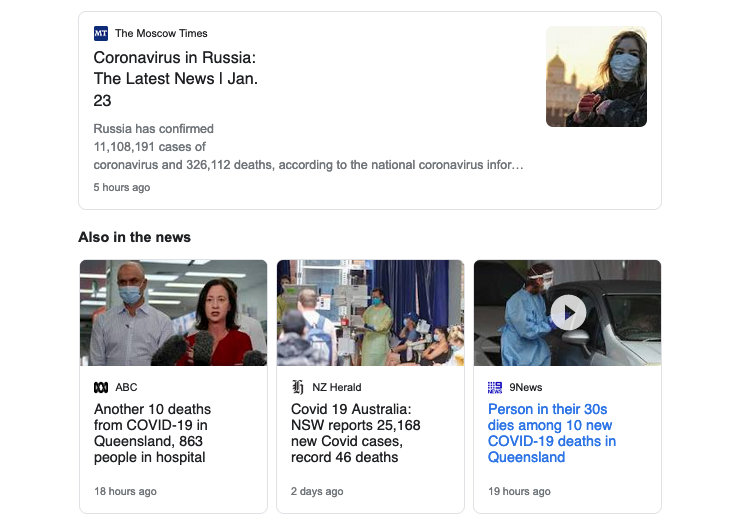
Missing context
“This is about the first time in human history when they have used ‘infection rate’ (how quickly the pathogen spreads) as the standard of measuring the hazard, not the ‘infection fatality rate’ (how many people infected by the pathogen die of it). Because the infection rate is quite high but the infection fatality rate is really low … All they needed to do was scare people with the numbers of cases of covid.”
The median infection fatality rate globally was calculated to be 0.23 per cent by John Ioannides in this paper last year, using seroprevalence studies.
British doctor John Campbell recently reported on a freedom of information request that showed the number of deaths solely attributed to covid in England and Wales since 2020 may be much lower than previously thought, about, 17, 371 deaths at an average age of 82.5 years.
“But a slight point of order: there are 7 billion people on this planet,” Simons points out.
The media has never provided this context for the public, along with many other basic but important distinctions, including differentiating between those who die with or of covid, or how the definition of a ‘case’ has been turned on its head, in a departure from traditional medical diagnosis to become a meaningless positive PCR test.
The lack of context has been one of the hallmarks of media coverage these last many months.
As Dr Sam Bailey notes in this interview (at the 25 minute mark):
“The cases that we hear in the news … of an eight-year-old or nine-year-old dying of covid-19 – well what happened with that child? Tell us more. You can’t just accept these things at face value.
“You want to know what was their background, what was their past medical history. Were they … in hospital for something else? To me it just doesn’t make sense. Eight or nine-year-olds don’t just die like that,” Bailey says.
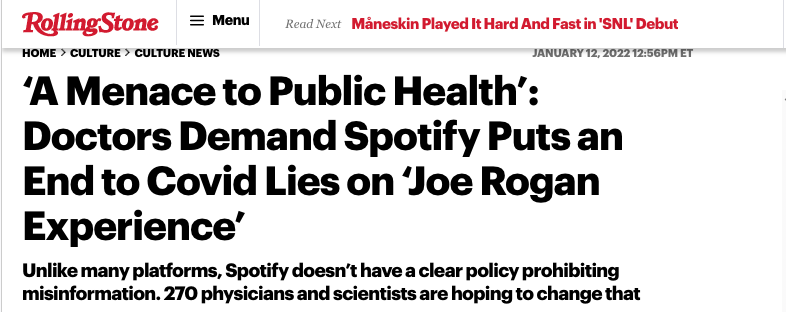
Censorship goes into overdrive
The covid-era has also seen the acceleration of ad-hominem attacks on personalities presenting inconvenient analysis and facts, increased use of behavioural science (‘nudge units’) by governments to influence people’s behaviour and an explosion of accusations of mis-and-dis-information from the orthodoxy against anyone that threatens the official story.
After Dr Robert Malone, one of the people who invented the MrNA technology used in the covid jabs, was interviewed by Joe Rogan on his podcast (incidentally this was on the same day as Twitter killed his account), a virtual angry mob of 270 ‘experts’ demanded that Spotify, which hosts Rogan’s show, censor him.
A Rolling Stone article quoted a ‘misinformation specialist’, Abbie Richards (emphasis mine):
“Any podcast that platforms dangerous people, people spreading dangerous ideas and misinformation, should not be allowed to go unchecked on the Spotify platform.”
However, only one third of the signatories turned out to be doctors, one reporter found. Despite this, the episode was reportedly scrapped after the backlash.
According to Simons, the aim was likely to be to deter other potential guests from appearing on the show by attacking Rogan, the messenger.
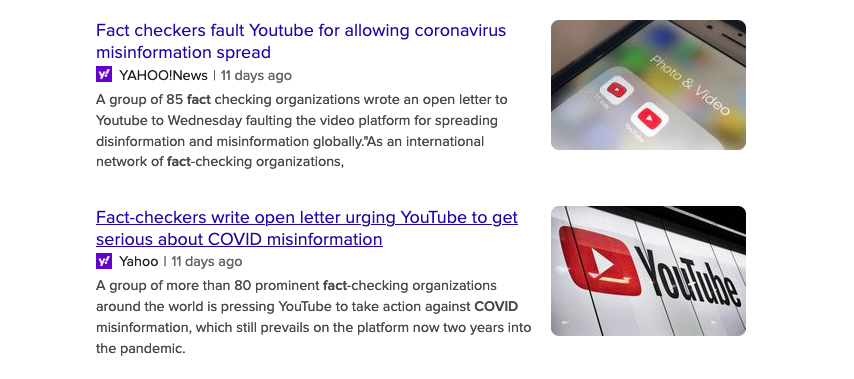
Misinformation misnomer
The use of the terms ‘misinformation’ and ‘disinformation’ have increased significantly, he says.
I ask Simons if these terms, along with ‘conspiracy theory’ are deployed to encourage the public to accept, and even demand, censorship.
“The first term to really gain coinage was fake news, and that was 10-15 years ago. And then you have this disinformation /misinformation and this whole industry of fact checkers – this is part of the narrative defence, nothing about [actual] misinformation and disinformation.”
A piece of research from Auckland University last year, from something called “the disinformation project”, in which researchers categorise ‘dangerous speech’, was widely reported in the legacy media when it was published.
The paper pointed out the obvious – that groups circulating sceptical information about the covid jab increased during last year’s August lockdown. The paper made this out to be something threatening rather than a justifiably suspicious portion of the public trying to establish the facts of what was really behind all the draconian covid policies (because the media refuse to), it also relied on dubious claims of ‘extremism’ made by a shady trans-Atlantic outfit called the Centre for Countering Digital Hate.
The paper states: “The study of Aotearoa New Zealand’s mis- and disinformation ecologies mirrors the work by the Centre for Countering Digital Hate (CCDH), and their consequential
Disinformation Dozen report.”
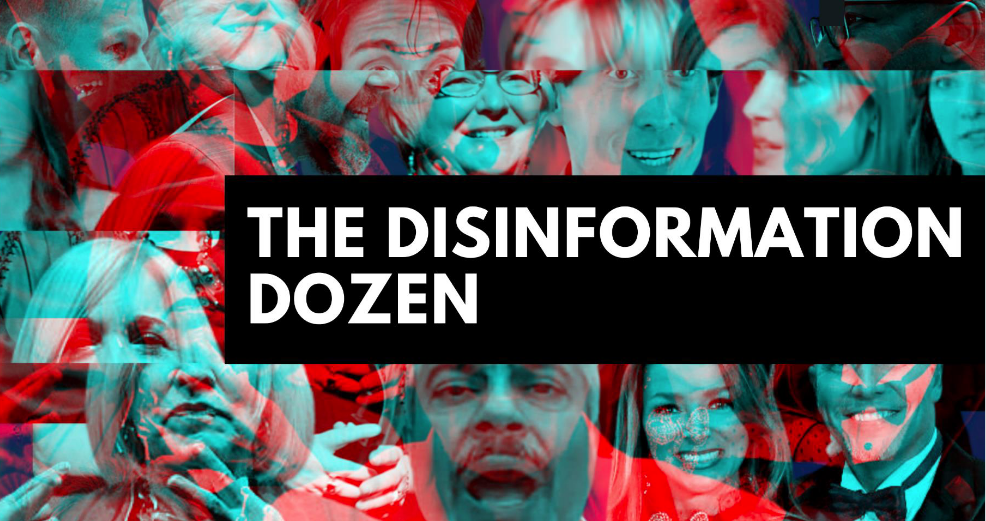
The CCDH is a UK based group that popped up out of nowhere a couple of years ago, with obscure funding sources. Some alternative media reporters have speculated it is funded by “dark money” and has links to intelligence agencies, and was formed as a front group to launch political attacks on the vaccine sceptic movement.
However, the Disinformation Dozen report, which accused 12 people of being vaccine misinformation super-spreaders on Facebook, and was adopted by US President Joe Biden (leader of the ‘free world’) who touted the censorship list publicly, was later discredited by Facebook itself.
“There isn’t any evidence to support this claim … In fact, these 12 people are responsible for about just 0.05% of all views of vaccine-related content on Facebook. This includes all vaccine-related posts they’ve shared, whether true or false, as well as URLs associated with these people.
“They are in no way representative of the hundreds of millions of posts that people have shared about covid-19 vaccines in the past months on Facebook,” Facebook vice president of content policy, Monica Bikert said.
Despite this, legacy media and academics continue to use CHDC’s report uncritically as a source.
None of this is by accident, Simons says.
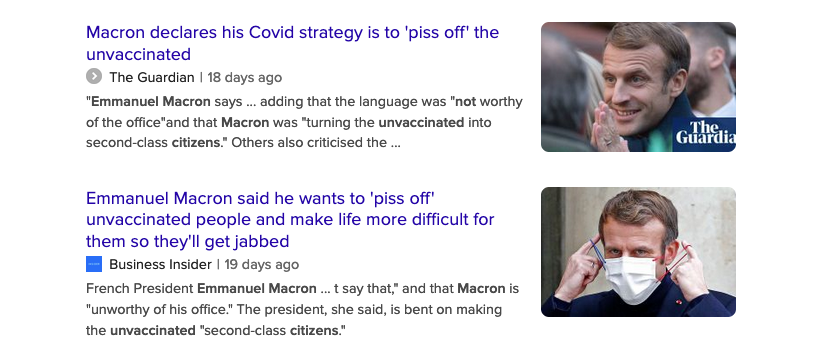
Coordinated communications
“All of these things are important elements and aspects of the bigger picture … There is also a great deal of consistency and similarity in tactics and strategy and especially narratives around the world.”
I ask Simons what he makes of the fact that between 4 January and 6 January, three world leaders made strident attacks on the unvaccinated, using highly defamatory and aggressive language.
Canadian Prime Minister Justin Trudeau said the unvaccinated were often also racists and misogynists, and that the country should ask itself if they should “tolerate” unvaccinated people any longer.
French President Emmanuel Macron said he wanted to “piss them off” until they relented, and that the unvaccinated were “not citizens”.
British Prime Minister Boris Johnson took a milder approach, but accused “anti-vax” campaigners of spreading “mumbo jumbo”, which is rich coming from a man who clearly doesn’t believe his own rhetoric on covid measures.
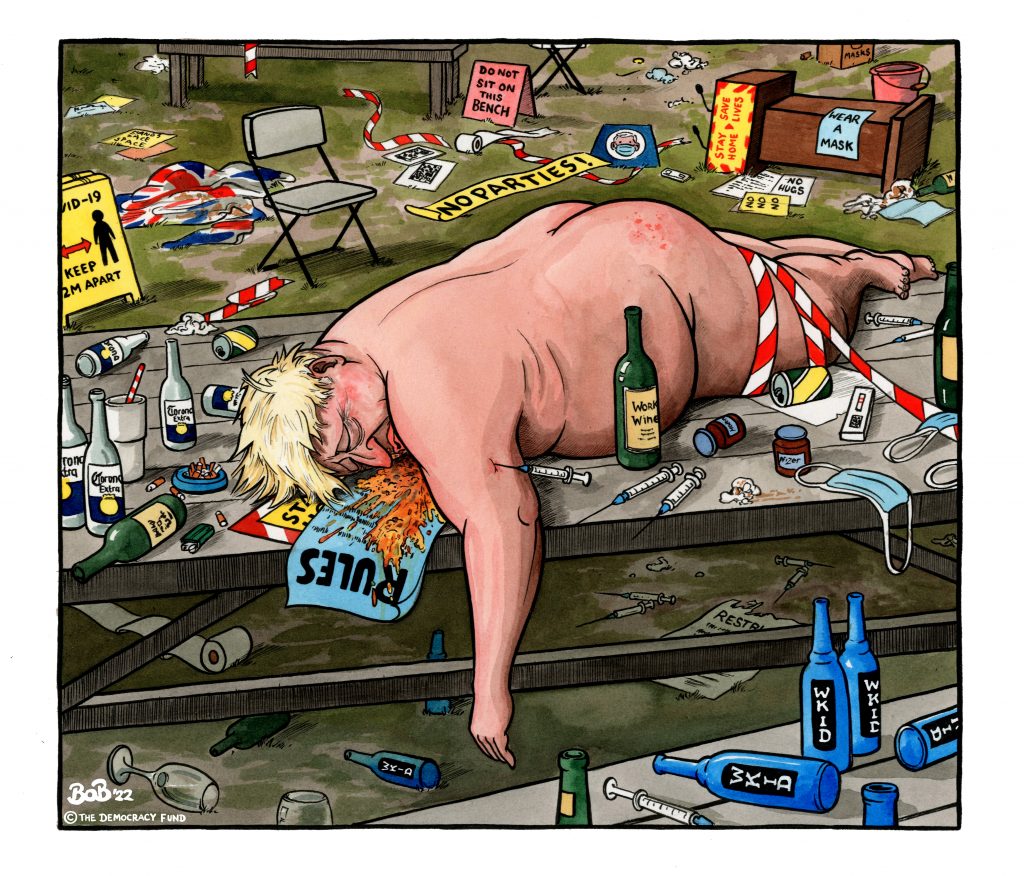
“What it is showing you is that the communications are coordinated. Anyone who works or has studied communications understands this is not random, this is not accidental … This doesn’t mean that one says it and politicians from different countries think it’s a wonderful idea. It means whoever is advising them is coordinating with them and it’s as simple as that.”
GB News commentator and presenter Neil Oliver came to a similar conclusion, which he outlines in this video.
Back in October, during the early days of the campaign to scapegoat the unvaccinated, Justin Trudeau and Jacinda Ardern used almost word-for-word the same phrases about rewarding the vaccinated for “doing the right thing”, and keeping them away from “people who are less safe”.
In a paper titled “Media inclusion and exclusion in the era of covid-19: “vaxxers” versus “anti-vaxxers”, Simons wrote that “mass media and journalism played an extremely uncritical, supportive and subservient role to their government’s agenda in the west. This contradicts the rhetoric of their role as a fourth estate, but confirms their role as an engineer of consent.”
Fear-based manipulation of the public by “nudge units”
The use of behavioural psychology, or nudge units, has also been in plain sight. The famous example is the UKs SAGE group saying that people didn’t feel scared enough of covid, and recommending fear based messaging in order to get people to comply with restrictions.
“A substantial number of people still do not feel sufficiently personally threatened … The perceived level of personal threat needs to be increased among those who are complacent, using hard-hitting emotional messaging.”
Earlier this months, epidemiologist and one of the main scientific faces of the covid response in New Zealand, Michael Baker, told The Guardian:
“The traffic light system won’t help us very much [with omicron] because it was never designed to dampen down transmission, it was only designed to nudge people towards vaccination.”
That’s right, the Government cast out about 10 per cent of the population from civic life, making an underclass of them through the introduction of vaccine certificates, to coerce them into taking a medical treatment.
But this discriminatory strategy, under which unvaccinated people are unable to eat in cafes and restaurants, get their hair cut, or sit a driving test among other things, was sold to the public on the lie that they are more likely to infect others with covid than a vaccinated person.
One headline read “Your unvaccinated friend is roughly 20 times more likely to give you Covid”, a statement which data out of highly vaccinated places such as Israel, Denmark, Barnstable County, Massachusetts and Waterford in Ireland has proved wrong.
“What is being attempted is communication management, but it is being waged within the fields of information warfare [with] a strong element of psychological operations attached to it. This has been done incrementally, followed by moving the goal posts after the audience has cognitively accepted the old trade – liberty traded for a false sense of security – and then a matter of rinse and repeat the steps,” Simons says.
The man doesn’t mince his words.
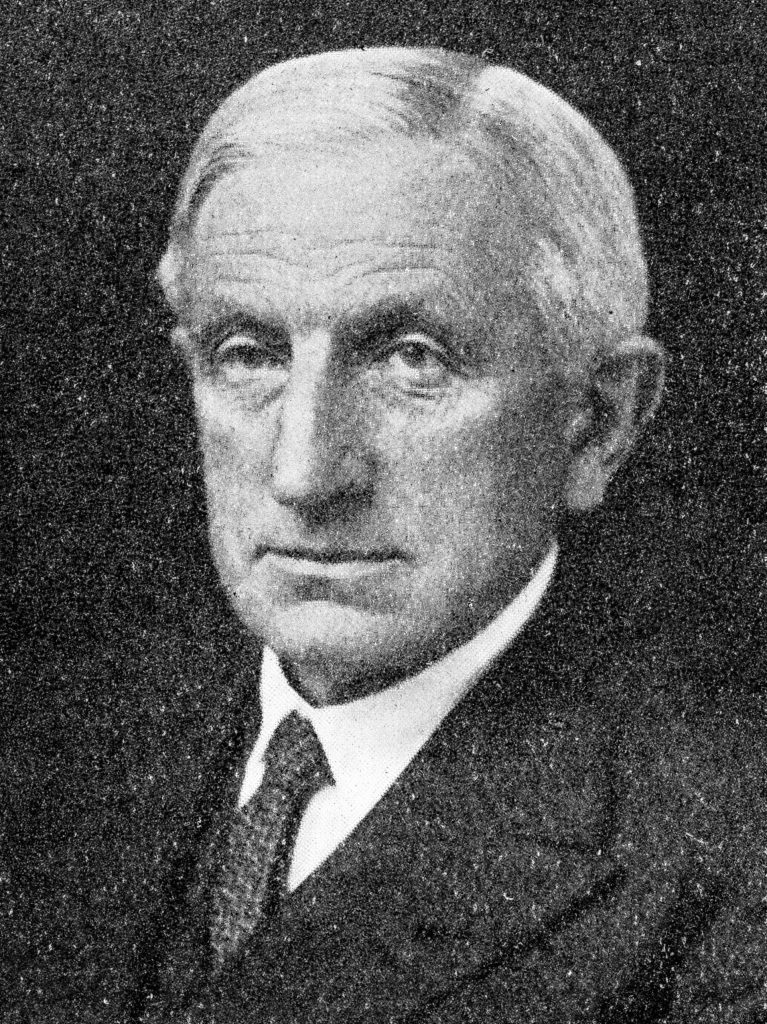
Total information domain dominance
Simons goes on to explain that attempts are being made in the information realm to totally dominate the cognitive world of individuals, in most cases by using fear as a quick fix. Fear is also used to create a “herd mentality” among a population.
“If you go back to the writing of people like Wilfred Trotter and Gustave Le Bon at the end of the 19th, beginning of the 20th century, they were talking about a ‘herd mentality’ based on fear and emotion, not on reason. The basic premise, if you can get a large audience to form this herd mentality … this makes them easier to control and more inclined to uncritically act against their objective interests through the suggestions made by the primary mainstream sources of information, such as [Jacinda] Ardern and MSM, [Anthony] Fauci, and other key influencers.”
A perception of trustworthiness is the key to the whole thing, he says. It’s not necessary for powerful players to enter into a reciprocal and mutually beneficial relationship with the public to do this. Instead the approach is transactional and asymmetrical.
“The main aim is to create ‘total information domain dominance’, which also excludes anything or anyone that contradicts or questions the official political narrative that is made in the name of science. This is why [we’ve seen] the massive use of catch phrases and slogans to try and solidify and consolidate the message and influence and persuade the audience and gain their compliance.”
He reels off a few as an example: ‘two weeks to flatten the curve’, ‘new normal’, ‘trust the science’, ‘build back better’.
I think of a few others: ‘team of five million’, ‘be kind’, ‘safe and effective’.
“Propaganda is most effective when it’s simple,” he says.
Narrative collapse
But the good news is, Simons believes the wheels are starting to fall off the narrative.
“One of the biggest problems you have in persuasive communication is to keep a lie going because you start getting caught out eventually. This is what is happening now. And this is what they tried in Austria. They tried one step too soon and too much.”
Simons is referring to Austria’s recent decision to impose compulsory vaccination against covid-19 on the entire population over age 12, with the threat of imprisonment for not complying.
“They thought that they had everything under control. But what happened was the division ceased because the vaccinated and the unvaccinated joined together on the streets and said ‘this is garbage’, and supported each other. It failed. And now they are trying to backtrack a bit, for ‘technical reasons’.”
The policy was due to come into effect on 1 February, but has been delayed until April.
Protests in Austria against the draconian policy continue.
Anti-lockdown and mandate protests are increasing in size around the planet, despite receiving very little news coverage.
Another example, he says, is the World Health Organisation now recommending the lifting of travel restrictions, including proof of vaccination, because they are ineffective and contribute to social and economic stress.
“The failure of travel restrictions introduced after the detection and reporting of Omicron variant to limit the international spread of Omicron demonstrates the ineffectiveness of such measures over time. Travel measures should be based on risk assessments and avoid placing the financial burden on international travellers in accordance with Article 40 of the IHR.”
Another clue is the US Supreme Court quashing Biden’s OSHA mandates, due to not being constitutional, he says.
Further developments in the last week include the CDC admitting that the injections cannot prevent transmission in an interview with CNN, and an admission that prior natural immunity after infection is protective against new variants, both of which destroy the case for certificates and mandates.
Associate Professor Greg Simons is a researcher at the Institute for Russian and Eurasian Studies at Uppsala University and a lecturer at the Department of Communication Sciences at Turiba University in Riga, Latvia.